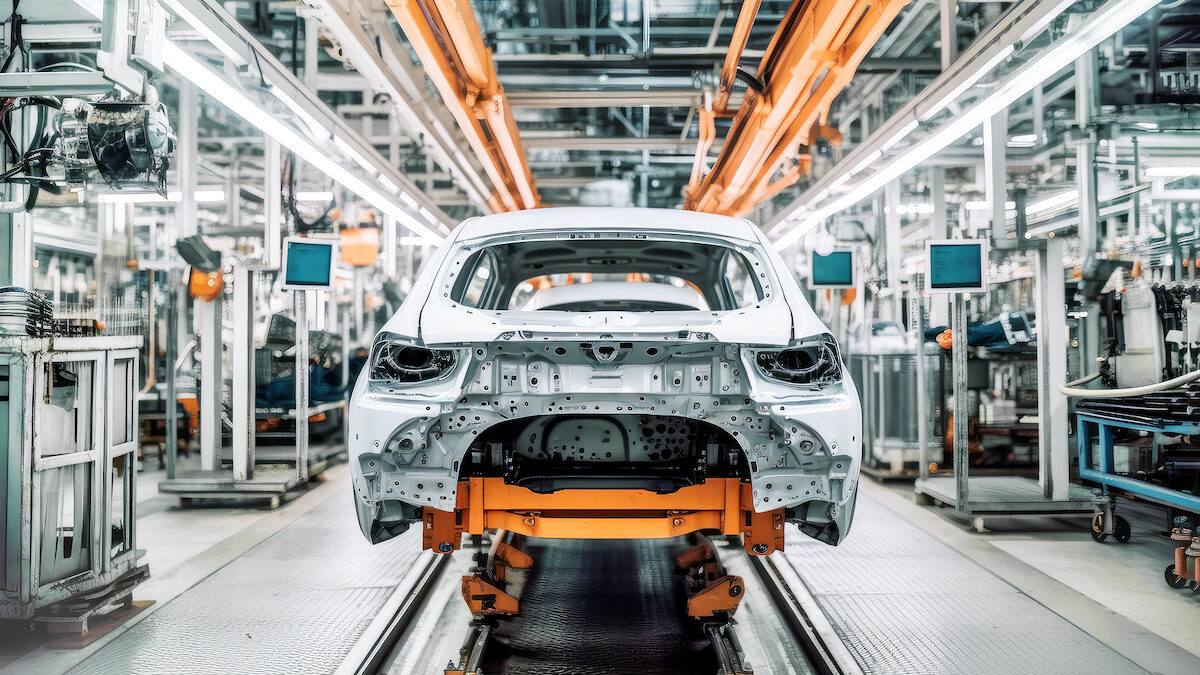
The last three administrations threw a lot at the wall to restore U.S. manufacturing, from the Bush administration’s targeted tax breaks to Obama’s “insourcing” commitments and Trump’s heavy-handed use of tariffs. While these combined efforts restored a small fraction of the country’s former manufacturing capacity, they were largely unsuccessful in shifting businesses’ preferences away from low-cost labor and far-flung supply chains.
Today, domestic manufacturing is in the midst of a remarkable resurgence, both driven and guided by the principles of climate action. As consumers, businesses, and governments around the world look to make deep emission reductions by switching to clean technologies, a new era of North American industrial might is emerging.
Spending on new production facilities, led by high-tech, low-emission fields, surpassed $300 billion in 2022-2023, more than was spent on office buildings, healthcare facilities, and schools. From batteries to electric vehicles, solar panels to semiconductors, the U.S. is getting back in the game of building while making its climate ambitions known. Over 140 new, large-scale climate tech manufacturing facilities have been announced, with investments surpassing the past seven-plus combined. And with nearly one million manufacturing jobs created, climate tech manufacturers are showcasing firsthand how the green economy can revive the backbone of the American workforce.
A Resurgence in the Making
Supply chain woes and the passage of the Inflation Reduction Act (IRA) — the largest climate tech stimulus bill in the history of the world — can largely be credited for today’s manufacturing boom. Pandemic-driven shortages and bottlenecks were an expensive shock to manufacturers and made evident the risks of relying on expansive, far-reaching supply chains for some of the most important products and materials on the market. As a result, many companies began weighing the benefits of relocating closer to end markets. Then came a range of generous climate tech subsidies midway through 2022, which officially transformed the U.S. into a hotspot for high-tech manufacturing investment. Suddenly, the employment opportunities and tax revenues legislators had been chasing for decades were in ample supply.
Summit Ridge Energy (SRE), for example, announced plans to source nearly 1.2 GW worth of solar panels from its partner Qcells’ expanded domestic production facilities. The largest investment in U.S. community solar to date, the partnership supports hundreds of jobs and has been directly attributed to the IRA. Enphase Energy, another major renewables player, announced $60M to onshore microinverter production, a key part of the solar supply chain that’s typically outsourced to Asia. The investment is expected to create 1,800 new jobs across six production lines and has been repeatedly touted by the Biden administration as evidence of the IRA’s effectiveness. Mobile battery energy storage company Moxion Power also unveiled a major investment in a state-of-the-art gigafactory spanning more than 200,000 square feet. With an expected annual capacity of more than seven-gigawatt hours, Moxion Power’s energy storage project is set to be one of the largest in the U.S.
Breaking From the Past For a Brighter Future
With numerous climate tech manufacturers making long-term commitments to the U.S. market, domestic supply chains are officially back in style. This is good news not only for workers and the climate, but also for U.S. businesses as they look to shore up their Environment, Social, and Governance (ESG) commitments ahead of impending regulation. For years, American companies looking to adopt green technologies — like solar panels — have had to rely on overseas producers in high-carbon jurisdictions, resulting in greater value chain emissions than otherwise necessary. With a growing number of domestic manufacturers available, opportunities for businesses to minimize scope 3 emissions and elevate their ESG performance are now plentiful.
Though it may not have seemed possible just a few years prior, the U.S. is re-emerging as a global leader in manufacturing thanks to the growing public and private sector impetus for climate action. Clean technology manufacturers are reshaping the fabric of the U.S. economy; for the sake of workers, businesses, and the planet, we should support them.